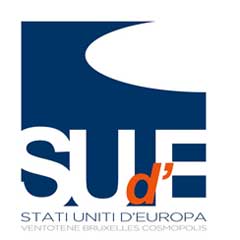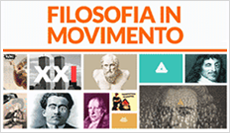a cura di carlo cosmelli
Nessun commentoSignor Berlusconi,
could you please reply publicly to the questions which follow?
Foreword
The Milanese bank, “Banca Rasini”, owned by Carlo Rasini in the 1970s, was cited by Michele Sindona, as well as in numerous official documents drawn up by magistrates investigating the mafia, as the principle bank used by the the mafia for laundering dirty money in the north of Italy.
Included among the Banca Rasini’s clients were Pippo Calò, Totò Riina and Bernardo Provenzano, during the years in which they formed the “cupola” (leadership) of the mafia. In those same years a certain Signor Luigi Berlusconi was employed at the Banca Rasini, first as a clerk, then as “Procurator with signing rights”, and finally as Manager.
1) In 1970, the Banca Rasini’s then Procurator, Luigi Berlusconi, ratified a very peculiar operation: the Banca Rasini acquired a share in Brittener Anstalt, a Nassau company linked to Cisalpina Overseas Nassau Bank, upon whose Board of Directors sat Roberto Calvi, Licio Gelli, Michele Sindona and Monsignor Paul Marcinkus. Was this Luigi Berlusconi, at that time “Procurator with signing rights” at the Banca Rasini, your father?
2) Again during the 1970s, a certain Signor Silvio Berlusconi registered twenty-three holding companies with the Banca Rasini as “Hairdresser’s and Beautician’s”. Were you this Signor Silvio Berlusconi?
3) You registered twenty-three holding companies named “Holding Italiana (Prima)” (Seconda, Terza, Quarta, and so on) with the Banca Rasini, and these owned the capital of Fininvest for a long period. You also registered another fifteen Holding companies with the Banca Rasini, which were engaged in operations in foreign markets. Were the twenty-three “Hairdresser’s and Beautician’s” holding companies, which were not found during a first investigation by the Italian “Guardia di Finanza”, and the twenty-three “Holding Italiana” companies, one and the same?
4) In 1979 the Customs Officer, Massimo Maria Berruti, resigned from the Italian “Guardia di Finanza”. He had led the investigation by the “Guardia di Finanza” into the twenty-three holding companies registered with the Banca Rasini, and had subsequently been responsible for closing that investigation. Immediately after his resignation, a certain Signor Massimo Maria Berruti was hired by Fininvest. Were they one and the same person? And was this person the self-same Signor Massimo Maria Berruti who was subsequently also found guilty of corruption, elected as a Member of Parliament as a representative of Forza Italia, and dealt with the relations between the four Fininvest companies and the London lawyer David Mills, who was himself recently found guilty in Italy following an initial tip-off from the authorities in London?
5) In 1973 the guardian of the heiress Anna Maria Casati Stampa (who at that time was still a minor), arranged the sale of the Casati family’s estate at Arcore, to Sig. Silvio Berlusconi. The Casati estate consisted of grounds extending over a million square metres, Villa San Martino - an eighteenth century building of 3,500 square metres with annexed park, an art gallery (“pinacoteca”) containing fifteenth and sixteenth century paintings, a library of about 3000 ancient books, stables and swimming pools – the value of which was inestimable. Yet it was sold for the sum of 500 million lire (250,000 euros) in the form of shares in a company which at the time was not quoted in the stock exchange. A few years later these shares were reacquired by you, Signor Berlusconi, for the sum of 250 million lire (125,000 euros). The guardian of Anna Maria Casati Stampa was a lawyer named Cesare Previti. Was this the same Cesare Previti who subsequently went on to become your lawyer at Fininvest, a Senator for Forza Italia, Defence Minister, and who was found guilty of corrupting judges, had his right to vote and to hold public office interdicted, and with whom you continue to socialise?
6) In 1978, inMilan (via Sant’Orsola 3), a company named Par.Ma.Fid.was set up. Par.Ma.Fid. was the same Trust Company which handled all the assets of Antonio Virgilio, financier for Cosa Nostra and money launderer on behalf of the clans of Giuseppe and Alfredo Bono, Salvatore Enea, Gaetano Fidanzati, Gaetano Carollo, Carmelo Gaeta and other mafia bosses (both from the Corleone area and beyond), all of whom were using Milan as a centre for international drugs trafficking and kidnapping. Signor Berlusconi, you assigned a significant number of shares in several of the above-mentioned twenty-three Holding Companies (even if you retained a controlling 51 per cent) to Par.Ma.Fid. On whose behalf did Par.Ma.Fid. manage this sizeable slice of the Fininvest Group, and why did you decide to entrust to this company such a large portion of your assets?
7) Signor Berlusconi, what was the source of the huge amount of capital which initiated your rise in the world of Italian finance when you were aged just twenty-seven?
As you will be well aware, Signor Berlusconi, any potential criminal offences pertaining to the questions posed above have long since ”timed-out”. But the problem is this: favours received from the mafia never “time-out”. The citizens of Italy, and of Europe, as well as the Prime Ministers of various countries with whom you will meet, have the right to know whether you are a free person, or are prone to blackmail.
P.S. Given that you have already been found guilty (even after final appeal to the Court of Cassation) of making false statements to a judge in a court of law, you should do us the courtesy of providing proof of whatever you say. Because your answers on their own are obviously not sufficient.
Carlo Cosmelli
http://sites.google.com/site/carlocosmelliwebsite/Home
The informations given in the seven questions have been extracted from the book “L’odore dei soldi” di Elio Veltri, Marco Travaglio (Editori Riuniti) 2001. They are therefore well-known to the press and the Italian members of the parliament.
{ Pubblicato il: 08.07.2009 }

















 «Passans, cette terre est libre» - Abbiamo scelto come logo la fotografia d'un autentico "Albero della Libertà" ancora vivente. È un olmo che fu piantato nel 1799 dai rivoluzionari della Repubblica Partenopea, Luigi Rossi e Gregorio Mattei, a Montepaone Superiore, paese dello Jonio catanzarese. La scritta 'passans ecc.' era qualche volta posta sotto gli "Alberi della Libertà" in Francia.
«Passans, cette terre est libre» - Abbiamo scelto come logo la fotografia d'un autentico "Albero della Libertà" ancora vivente. È un olmo che fu piantato nel 1799 dai rivoluzionari della Repubblica Partenopea, Luigi Rossi e Gregorio Mattei, a Montepaone Superiore, paese dello Jonio catanzarese. La scritta 'passans ecc.' era qualche volta posta sotto gli "Alberi della Libertà" in Francia.

